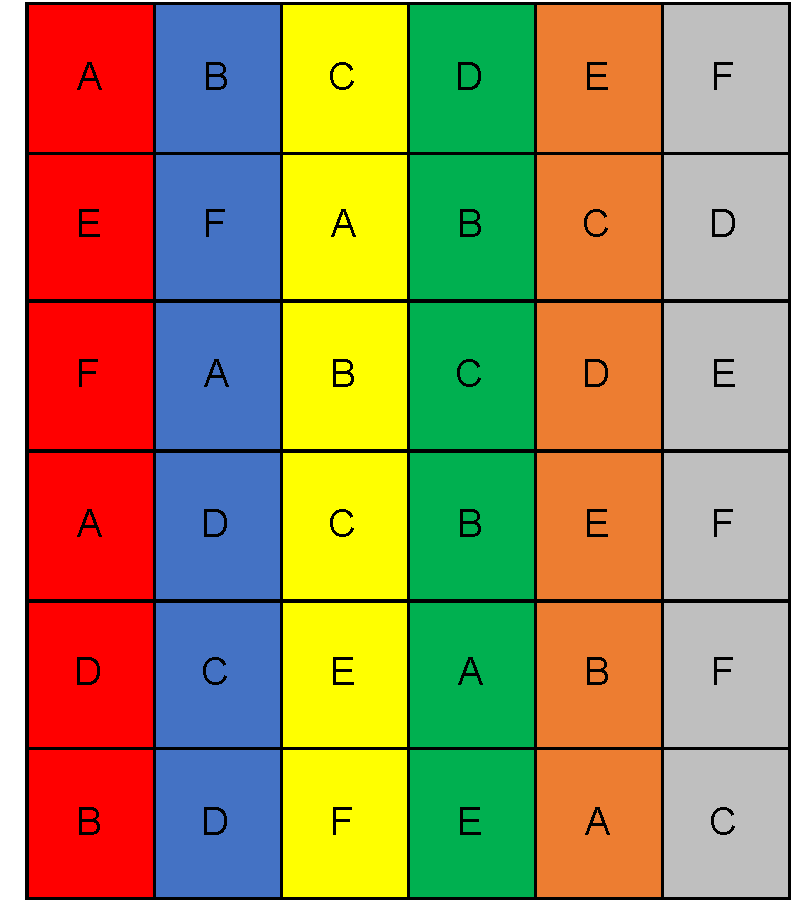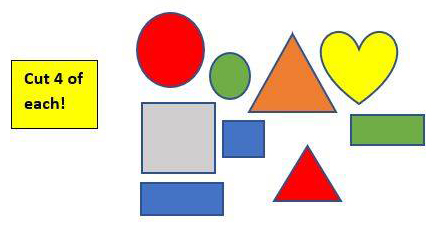(A 5 – 10 min. exercise after prepping the shapes)
Parents: This activity will take five to ten minutes to play after prepping the shapes. You’ll need to gather paper, scissors, colored markers and a ruler.
- On a piece of paper make a 6x6 table (Manually or computer) Table A. (You can also use different colors of construction paper for this activity)
- Color each column a different color
- Write an alphabet (A-F) across each row according to Table A.
- Cut out each square. Be sure to protect the letters on each square!
- Cut 4 random squares into small triangles and 4 into larger triangles.
- Cut 4 random squares into small circles and 4 into large circles.
- Cut 4 random squares into small rectangles and 4 into larger rectangles.
- Trim 4 squares into smaller squares and leave 4 squares intact as larger squares.
- Cut 4 remaining squares into hearts
Begin the exercise by:
- Mixing up all of the shapes, then spread out into a pile on a table.
- Ask each child/ participant to sort the pieces into groups in whichever way they choose. (Try not to prompt the child)
Parents should note after the activity that some will group by shapes. Others may group by color. Others may group by alphabets. Some may group by sizes, etc... The objective is to help children understand we naturally and subjectively sort things, recognizing commonalities as well as differences. There is no particular right or wrong, and no “good” or “bad,” but it is interesting to encourage and listen to the reasonings for choices to see if judgements exist as to which way is “best” and why.



